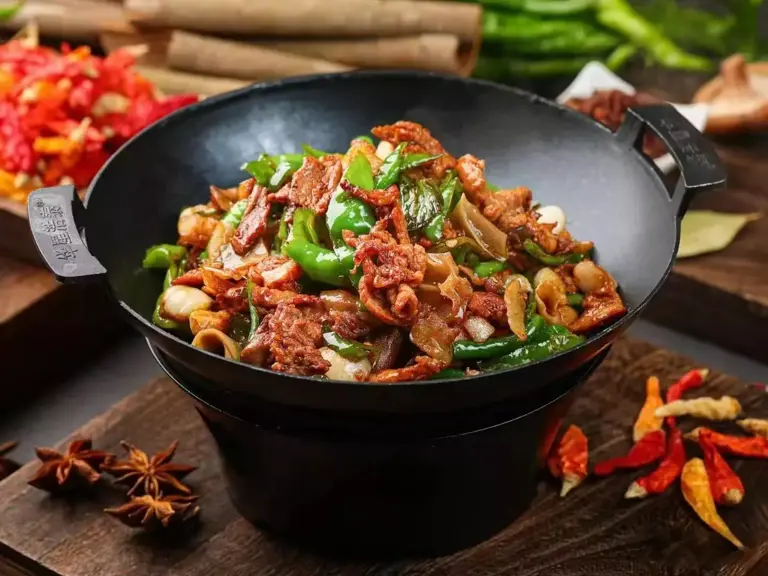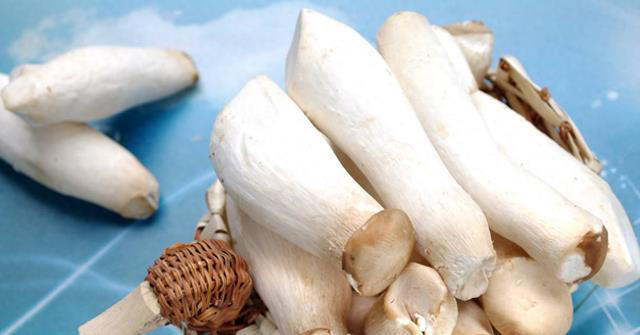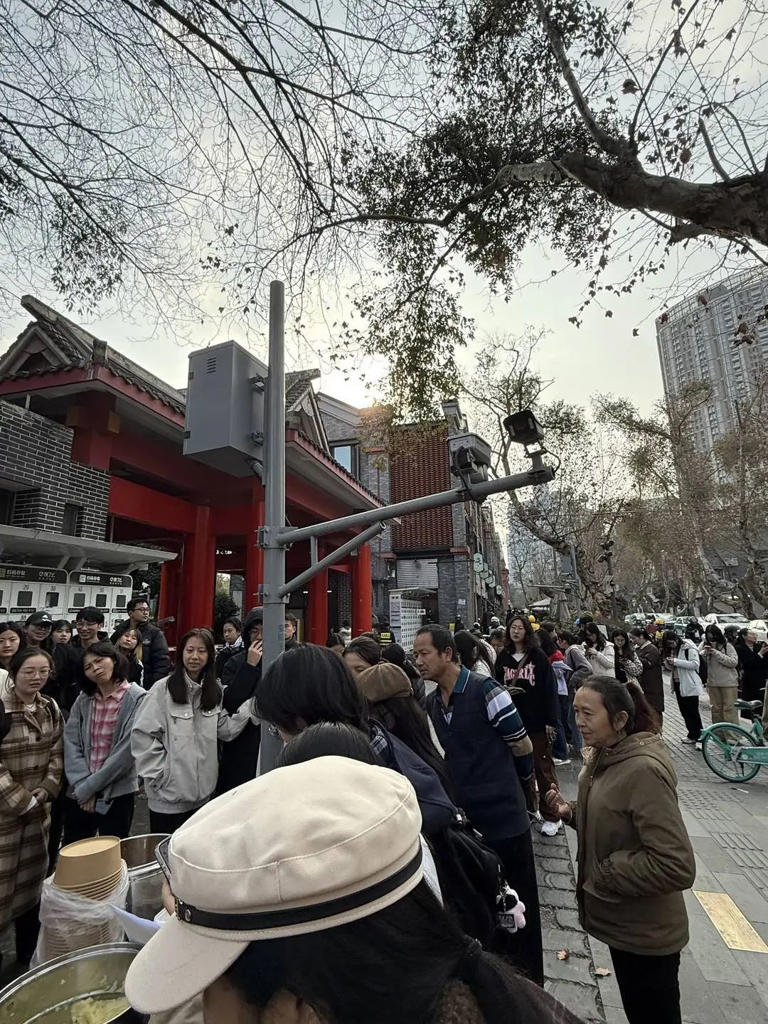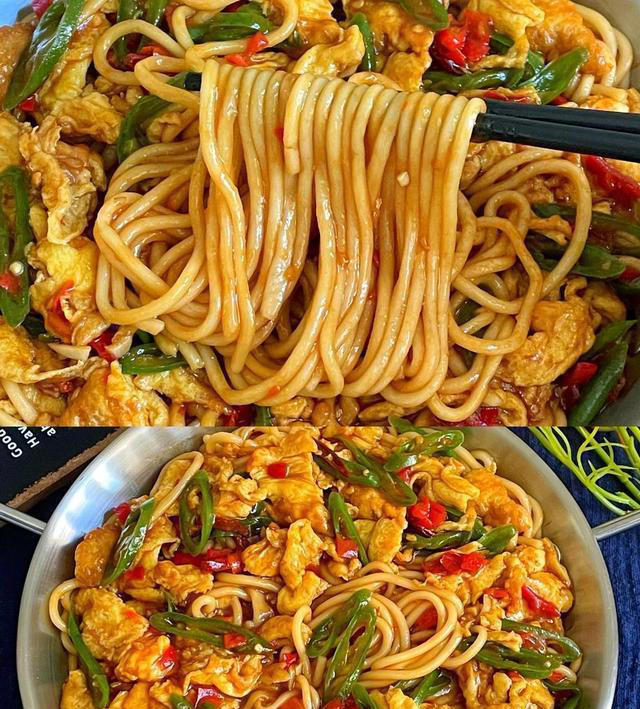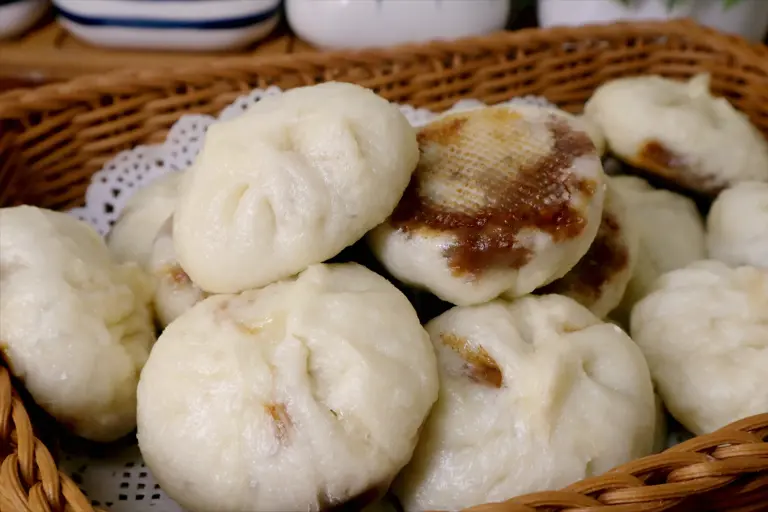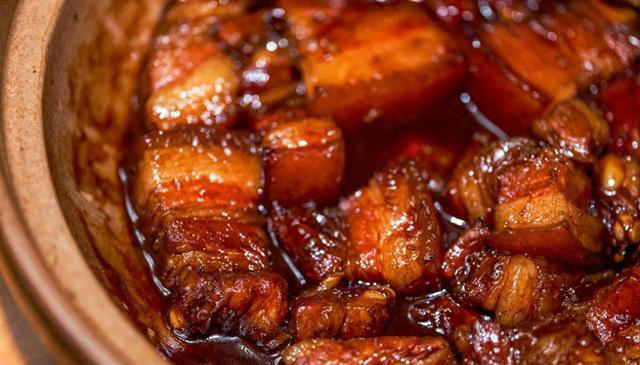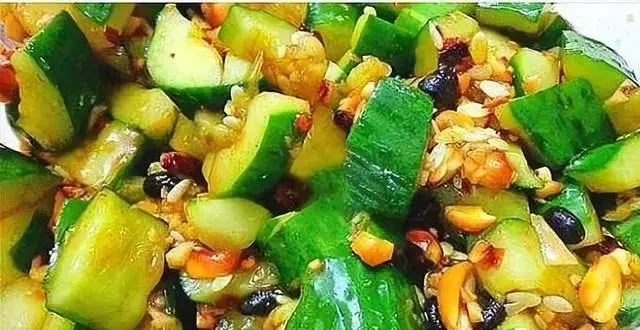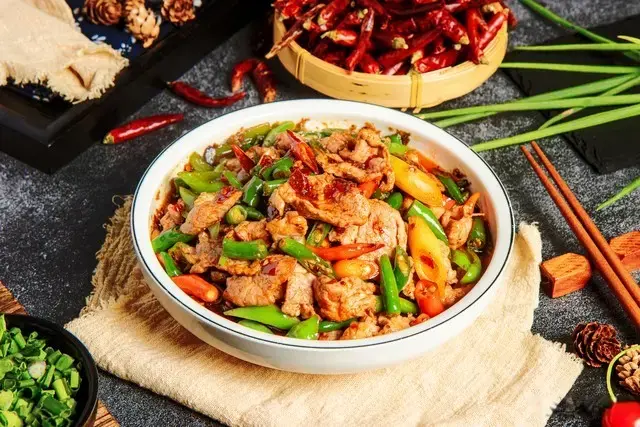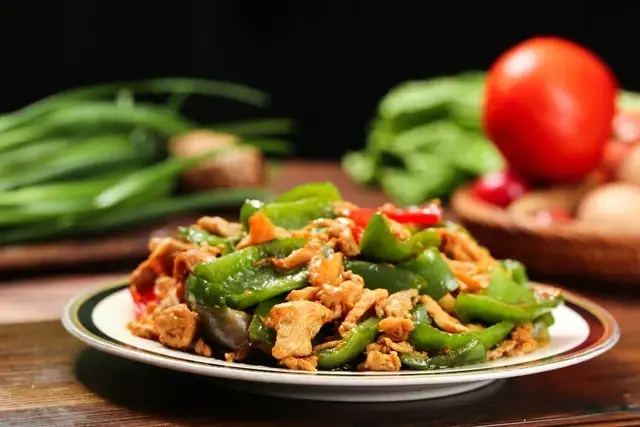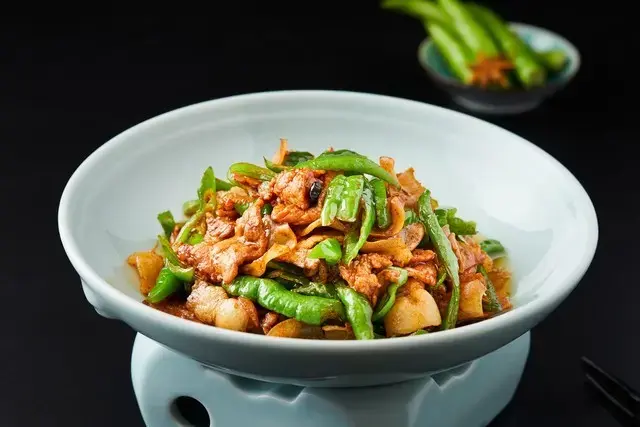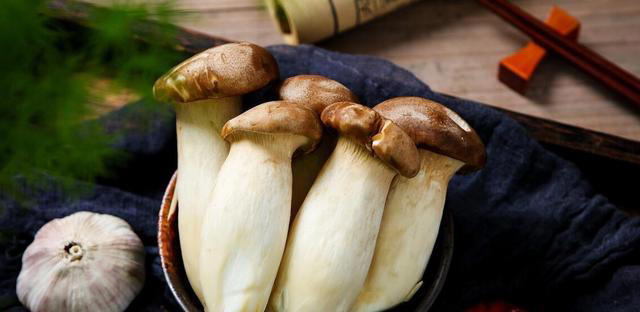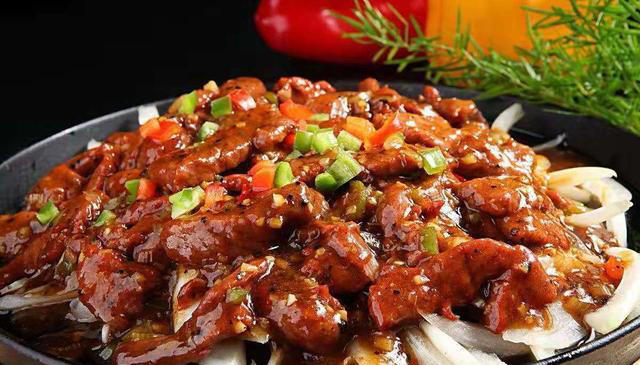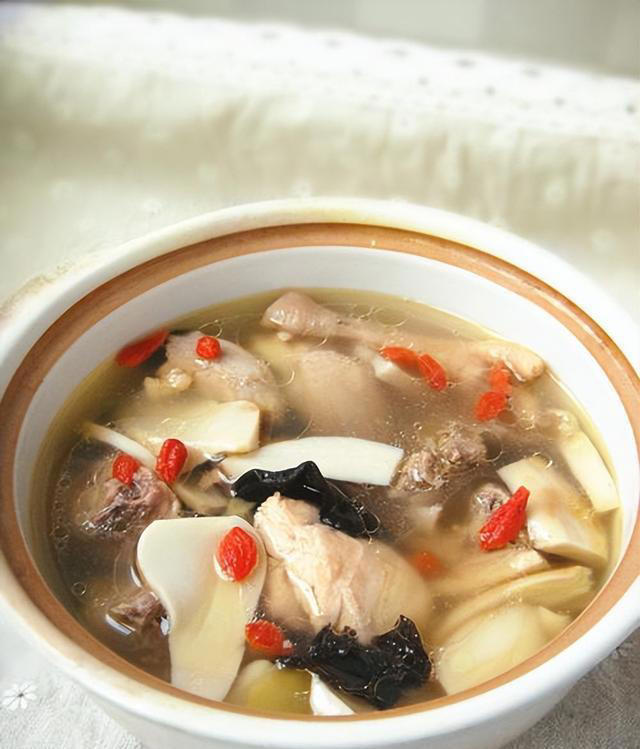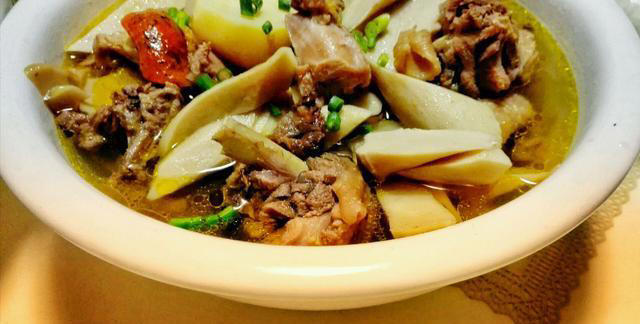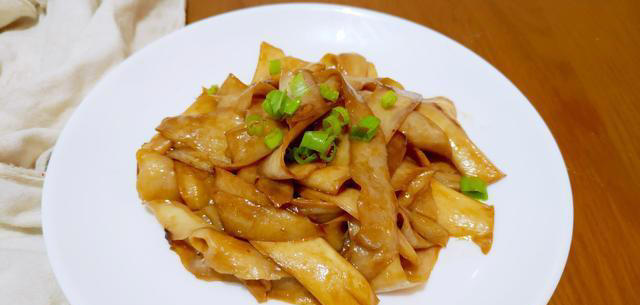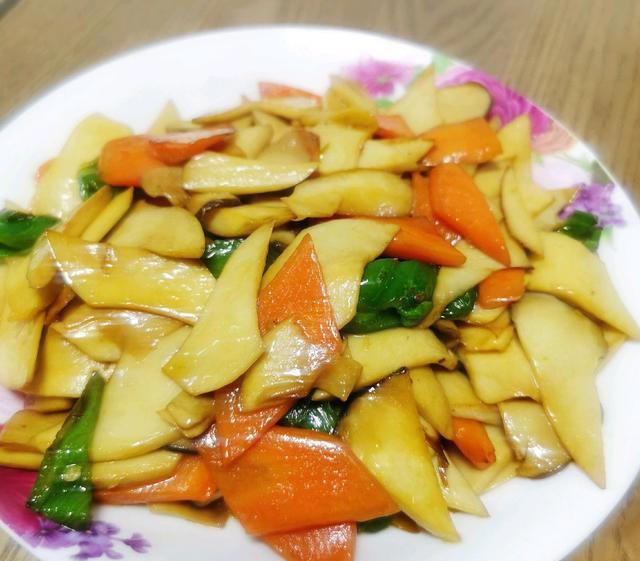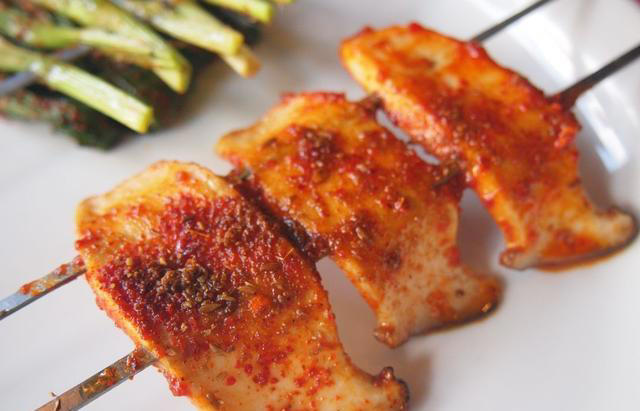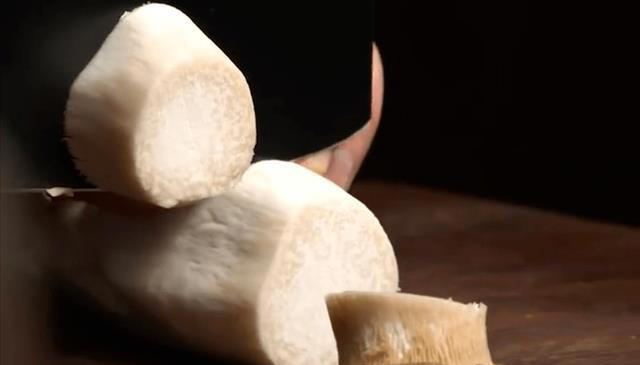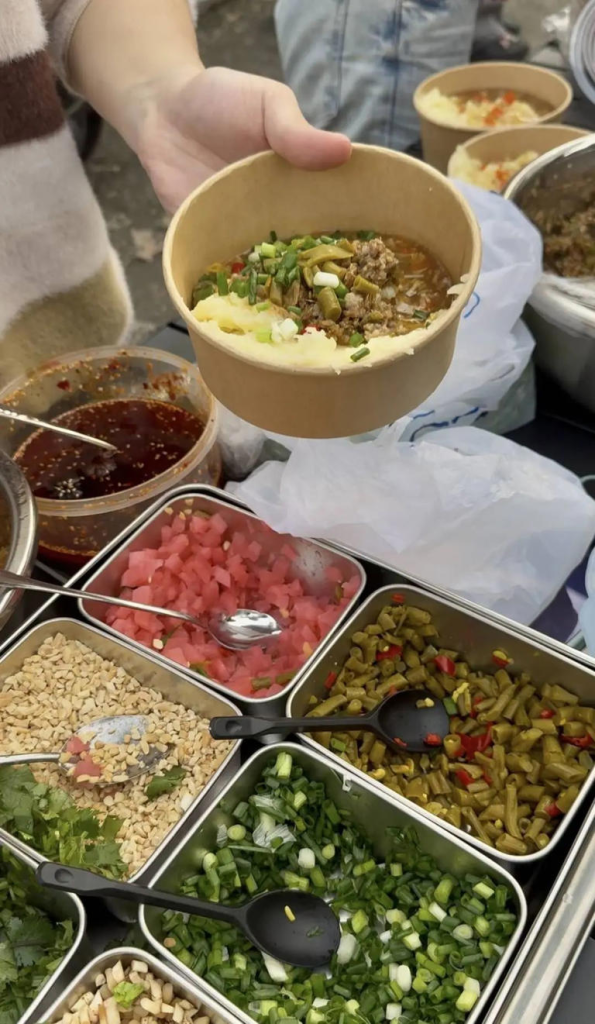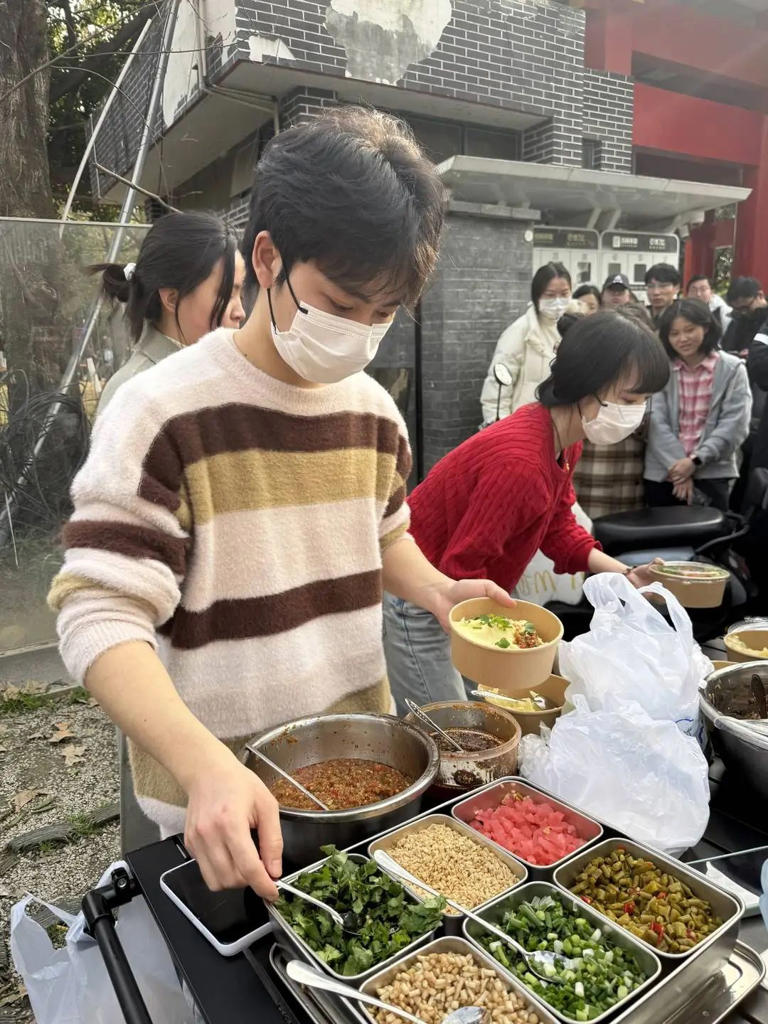Perilla leaves are a nutritious ingredient that is not only popular in Chinese cuisine, but is also often used to add flavor to dishes due to their unique aroma and taste. Perilla leaves are rich in vitamins, minerals and antioxidants, which have a significant effect on enhancing immunity, promoting digestion and alleviating allergies. Due to the fresh and slightly spicy flavor of perilla leaves, it can be paired with a variety of ingredients to create a surprising deliciousness. At family dinners, perilla leaves always bring a different flavor and texture, making each meal more unique and nutritious.
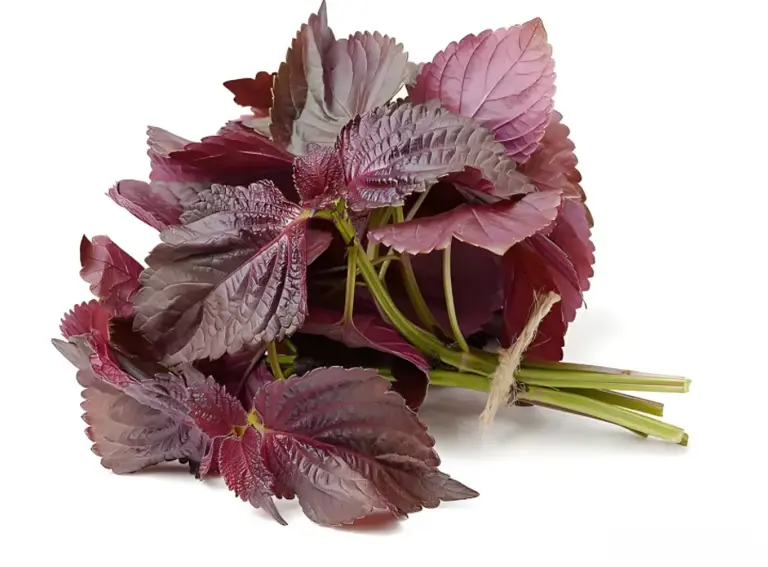
1. Perilla leaves mixed with cucumbers
Ingredients: perilla leaves to taste; 2 cucumbers; garlic 2 cloves; 1 scoop light soy sauce; vinegar 1 tbsp; 1/2 tablespoon sugar; Salt to taste; Chili oil (optional) to taste; 1/2 scoop sesame oil
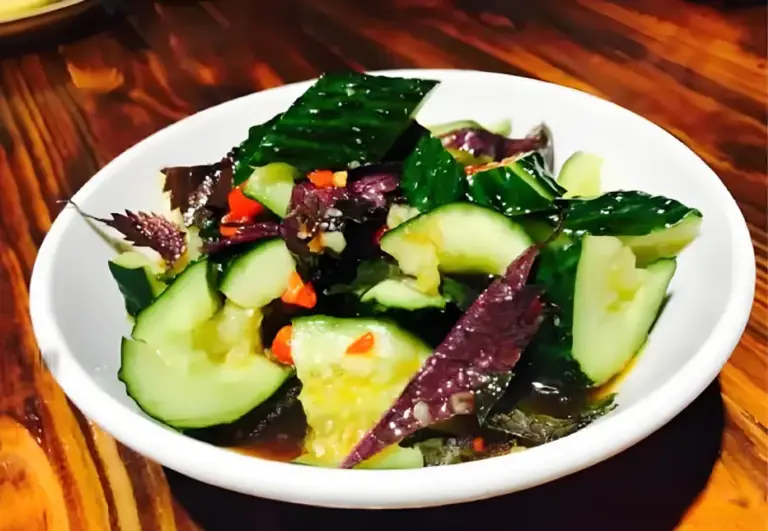
Steps:
1. Prepare the cucumber: Wash the cucumber, remove the ends, cut it into thin slices or pat it loosely and cut it into sections. Patting loose cucumbers can better absorb the seasoning.
2. Handle perilla leaves: Take an appropriate amount of perilla leaves, remove the old leaves, wash and drain. Perilla leaves can be cut into small pieces according to personal preference, or they can be put in whole.
3. Prepare minced garlic: Chop the garlic into minced garlic and set aside. If you like the strong garlic flavor, you can increase or decrease the amount of minced garlic in moderation.
4. To prepare the sauce: In a small bowl, add 1 tablespoon of light soy sauce, 1 tablespoon of vinegar, 1/2 tablespoon of sugar, salt to taste, stir well until the sugar and salt are completely dissolved.
5. Mix cucumber and basil leaves: Place the chopped cucumbers in a large bowl and add the basil leaves and minced garlic.
6. Add seasoning: Pour the mixture into the mixture of cucumber and shiso leaves and mix well so that each slice of cucumber and shiso leaves is evenly coated with the sauce.
7. Add sesame oil and chili oil: Finally, you can add a little sesame oil to enhance the fragrance according to your personal taste, and if you like spicy flavor, you can add some chili oil and mix well.
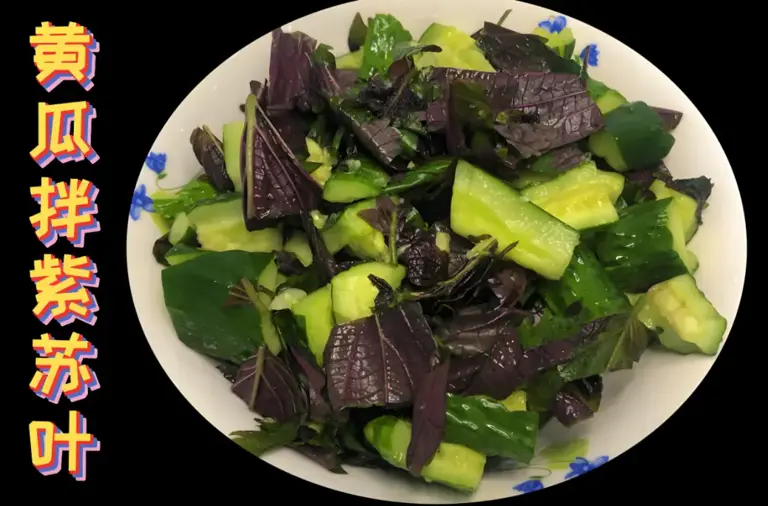
Tips:
(1) Cucumber cutting method: Patting cucumbers can make cucumbers better absorb seasonings and have a better taste. If you don’t like to shoot cucumbers, you can also cut them directly into thin slices.
(2) The use of perilla leaves: The amount of perilla leaves can be increased or decreased according to personal preference, the aroma of perilla leaves is strong, and a small amount can increase the flavor of dishes.
(3) Proportion of seasoning: The proportion of light soy sauce, vinegar and sugar can be adjusted according to personal taste, and those who like sour or sweet can be appropriately increased or decreased.
2. Perilla leaf stew
Ingredients: pork (pork belly or lean meat) 500 grams; Perilla leaves: Appropriate amount; 3-4 slices of ginger; 1 green onion; 1 tablespoon cooking wine; 2 tablespoons soy sauce; 1 tablespoon sugar; Light soy sauce to taste; Salt to taste; star anise 2 pieces; Water: Appropriate amount
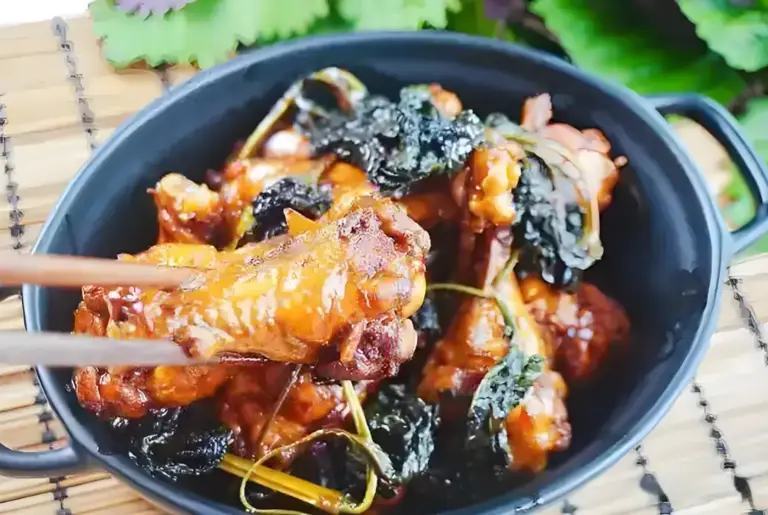
Steps:
1. Prepare the meat: Cut the pork into pieces, suitable for the size of the stew, usually 2-3 cm square. You can choose pork belly or lean meat for the cuts, and the pork belly stew has a richer soup and the lean meat is more refreshing.
2. Blanch: Add enough water to the pot, add the cut meat, heat over high heat until the water boils, skim off the foam, remove and wash for later use.
3. Stir-fry the sugar: Add a little oil to the pan, add 1 tablespoon of sugar, heat over low heat, and when the sugar begins to dissolve and bubble, stir quickly until the sugar turns golden brown.
4. Stir-fry the meat pieces: Add the blanched meat pieces to the pot and stir-fry until the surface of the meat pieces is evenly colored and the sugar color is evenly wrapped on the meat pieces.
5. Add seasoning: Add ginger, green onion and star anise, then add 1 tablespoon of cooking wine to remove the smell, then add 2 tablespoons of soy sauce and an appropriate amount of light soy sauce, and continue to stir-fry evenly.
6. Add water and simmer: After stir-frying all the ingredients evenly, add enough water to cover the meat pieces. Bring to a boil over low heat and simmer for about 40 minutes, until the meat is cooked and flavorful.
7. Add the perilla leaves: For the last 20 minutes, add the perilla leaves. The perilla leaves are washed and cut to the appropriate size in advance, and after being added, they continue to simmer, and the aroma of the perilla will penetrate into the meat and enhance the taste.
8. Seasoning and juice reduction: When the meat is stewed until cooked and the soup is rich, add an appropriate amount of salt to taste, continue to simmer for a few minutes, and finally thicken the excess soup until the juice is slightly viscous.
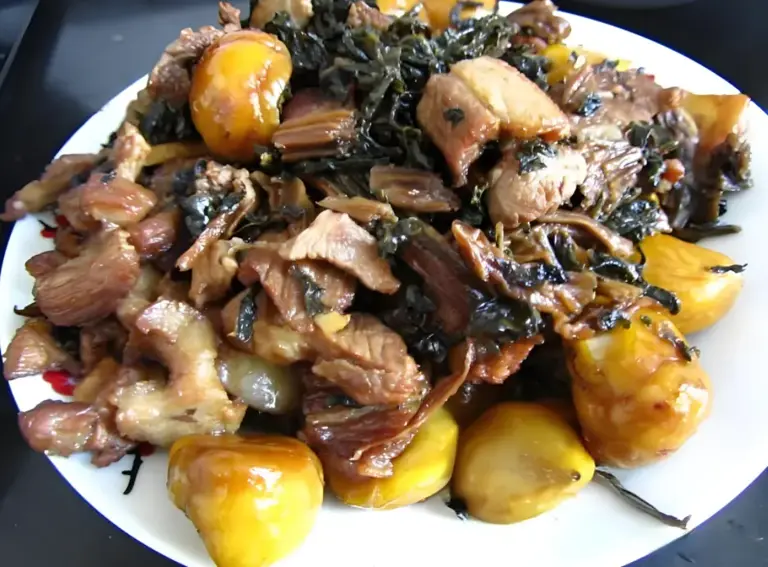
Tips:
(1) Meat selection: The soup stewed with pork belly is richer, with fat and more flavorful. If you prefer something lighter, opt for lean or chicken.
(2) The amount of perilla leaves: The addition of perilla leaves should be adjusted according to personal taste, generally adding an appropriate amount of perilla leaves will add a fragrance, but do not put too much, so as not to make the taste too strong.
(3) Stir-fry the sugar: When frying the sugar, you should master the heat, if the heat is too large, the sugar will be burned, and if the heat is too small, the sugar will not be easy to dissolve, which will affect the color.
3. Steamed fish with perilla leaves
Ingredients: 1 fresh fish (common ones are sea bass, grouper or crucian carp, etc.); Perilla leaves: Appropriate amount; 3-4 slices of ginger; 1 green onion; 1 tablespoon cooking wine; 1 scoop light soy sauce; Ground white pepper to taste; Salt to taste; 1 tablespoon of olive oil (or vegetable oil); Water: Appropriate amount
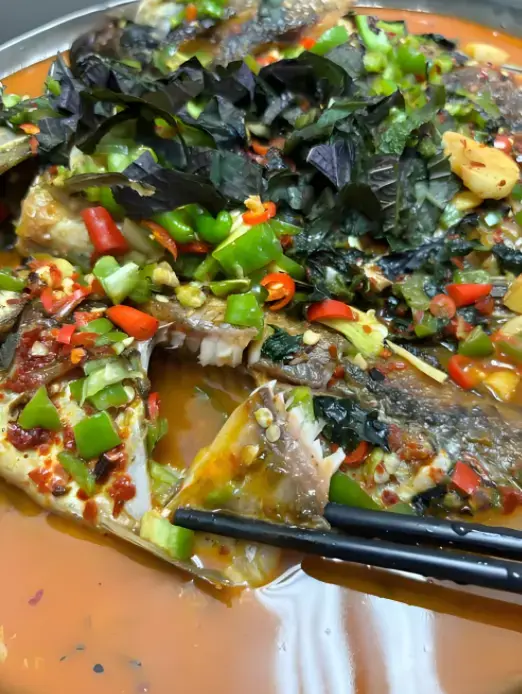
Steps:
1. Prepare the fish: Handle the fish cleanly, remove the internal organs, scales and gills, and wash the surface. Use a knife to gently make a few cuts on both sides of the fish body to facilitate the flavor. Spread evenly on the fish with a pinch of salt and marinate for 10 minutes.
2. Ginger and shallots: Cut the ginger into thin slices and cut the green onion into segments. Some of the ginger slices can be shredded and spread under the fish, and some can be placed inside the belly of the fish.
3. Prepare the steamer: Add an appropriate amount of water to the steamer, put the steaming rack on the steamer after the water boils, and prepare the steamed fish.
4. Spread the ginger and shallots: Spread the sliced ginger on the bottom of the steaming tray and place the fish on top of the ginger slices. Then put part of the green onion into the fish belly, and the other part of the green onion and ginger can be placed on the fish.
5. Add seasoning: Drizzle 1 tablespoon of cooking wine evenly over the fish, then sprinkle with an appropriate amount of white pepper and light soy sauce for a richer seasoning.
6. Spread the perilla leaves: After washing the perilla leaves, pat them slightly with your hands to release the aroma. Spread the perilla leaves evenly over the fish and cover the flesh.
7. Steamed fish: Put the prepared steaming tray into the steamer and steam over high heat for 10-12 minutes, the specific time is adjusted according to the size and thickness of the fish. After steaming, turn off the heat and let stand for 2-3 minutes.
8. Finish and plate: Take out the steamed fish, gently remove the perilla leaves, drizzle a little of the original juice of the steamed fish, sprinkle with a little chopped green onion, and finally add some olive oil or vegetable oil to increase the aroma.
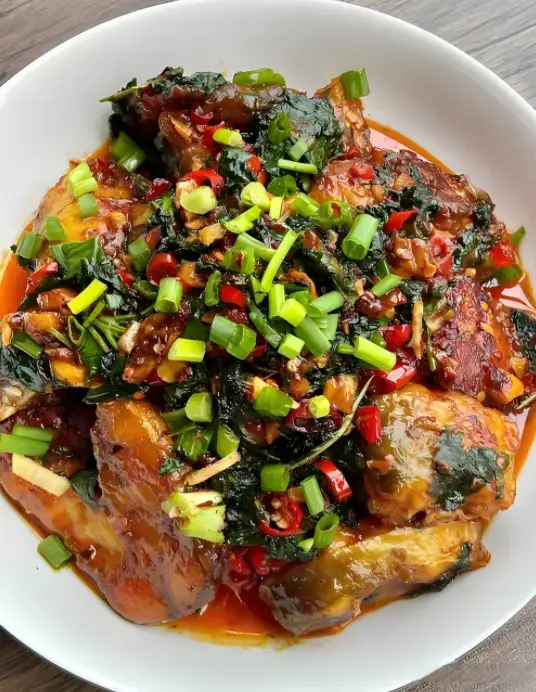
Tips:
(1) Selection of fish: It is best to choose fish with delicate flesh for steamed fish, such as sea bass, crucian carp, grouper, etc., which are delicious and suitable for steaming. The fish body should be fresh, so that the steamed taste will be better.
(2) Steaming time: The steaming time of the fish should be determined according to the size of the fish. Generally, the smaller fish can be steamed for 10-12 minutes, and the larger fish can be appropriately extended for steaming time. To ensure that the fish is tender, do not steam it for too long.
(3) Use of perilla leaves: Perilla leaves can add aroma, but too much may be a little spicy. Adjust the dosage according to personal taste, it is recommended not to overdo it.
4. Scrambled eggs with perilla leaves
Ingredients: 4 eggs; Perilla leaves: Appropriate amount; 1 green onion; 2 slices of ginger; Salt to taste; Ground white pepper to taste; Olive oil or vegetable oil to taste
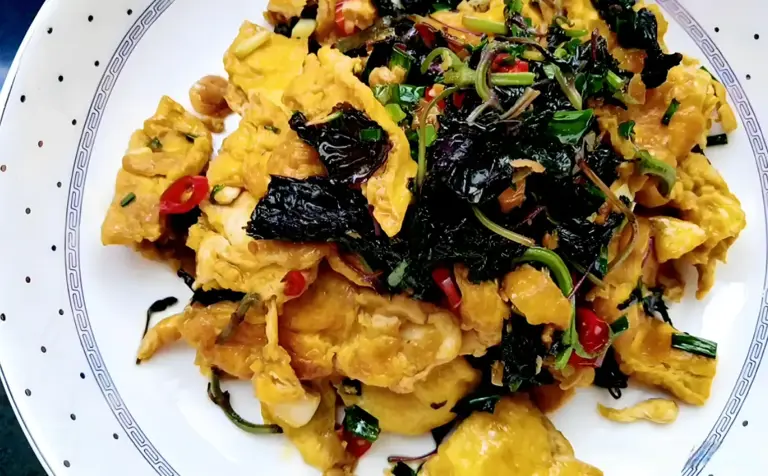
Steps:
1. Prepare the eggs: Crack the eggs into a bowl, add a pinch of salt and white pepper, beat and set aside.
2. Wash the perilla leaves: After picking the perilla leaves, wash them carefully and drain the water. You can cut it into small pieces with a knife, or tear it into larger pieces by hand and set aside.
3. Green onion and ginger processing: Cut the green onion into chopped green onions, cut the ginger into thin slices and set aside.
4. Add oil to the hot pan: Add an appropriate amount of oil to the wok and heat over medium-low heat. When the oil is hot, add the ginger slices and chopped green onion and stir-fry until fragrant.
5. Sauté perilla leaves: Add the chopped perilla leaves to the pan and stir-fry for about 1-2 minutes until the perilla leaves soften slightly and release the aroma.
6. Add the egg mixture: Pour the beaten egg mixture evenly into the pot, let it stand for a while, and when the edge of the egg mixture is slightly solidified, gently stir with a spatula to heat it evenly.
7. Scrambling until the eggs are cooked through: Continue to stir-fry until the eggs are cooked through, tender and golden brown. Make sure the basil leaves and eggs are well combined.
8. Serve and enjoy: Remove the scrambled eggs with perilla leaves from the pan, put them on a plate, adjust the shape slightly and enjoy.

Tips:
(1) Egg beating skills: When beating eggs, you can add a little salt and pepper to taste to make the eggs more flavorful. Use chopsticks or whisks to break up the eggs and try to beat them evenly, so that the scrambled eggs have a more delicate taste.
(2) Use of perilla leaves: Perilla leaves can be slightly torn before frying, so that it is easier to release the aroma. Don’t put too many perilla leaves, too much will cover the flavor of the eggs and affect the taste.
(3) Tips for scrambling eggs: Scrambled eggs until golden brown and fluffy is the ideal state, avoid scrambling too old, and maintain the tender taste of the eggs. You can control the heat and do not scramble eggs on high heat to avoid scrambling eggs old.
Whether it is the freshness of perilla leaves mixed with cucumbers, the richness of perilla leaf stew, or the fresh aroma of steamed fish with perilla leaves, or even the delicacy of scrambled eggs with perilla leaves, each dish can give full play to the unique flavor of perilla leaves and bring different taste enjoyment. Families often praise these dishes for being delicious and healthy, making perilla leaves not just an ordinary ingredient, but a highlight on the table. Through these simple but creative ideas, perilla leaves have become an indispensable delicacy in home cooking, and we can enjoy the double gift of health and deliciousness.

 Entering China
Entering China